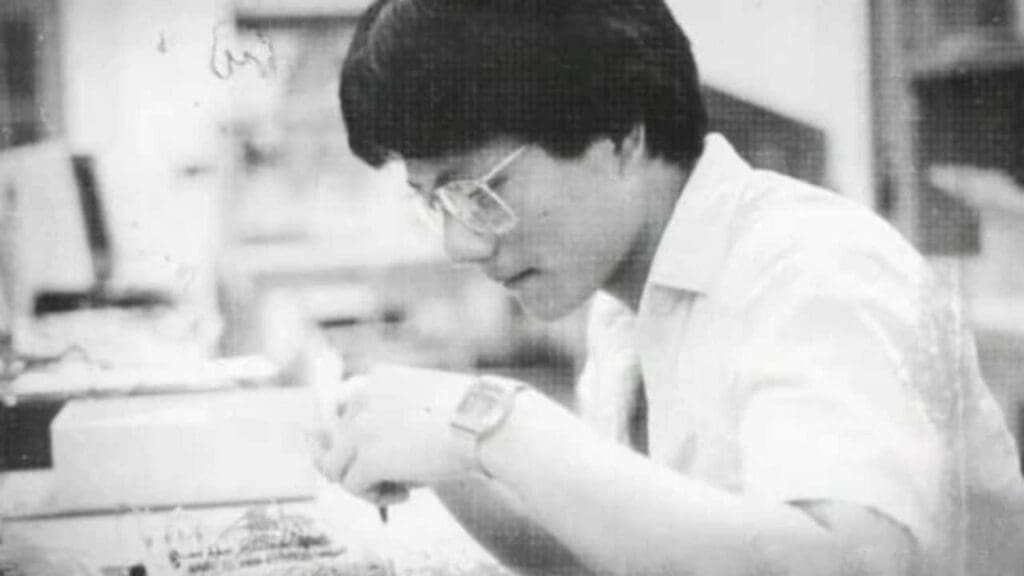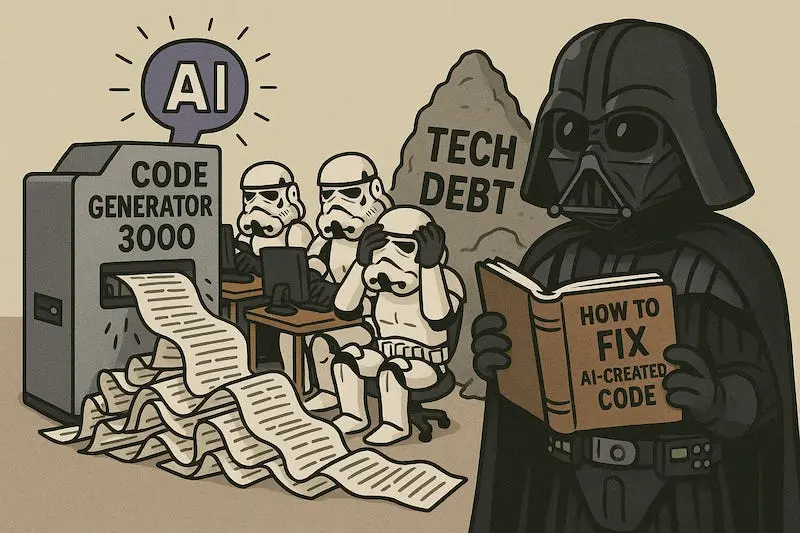
The Ultimate AI Shuffle: Why Nvidia's CEO Wants You to Become an Electrician
Jensen Huang's confusing career advice: Telling Gen Z to skip coding while his engineers use AI to build the AI revolution.
Nvidia CEO Jensen Huang has mastered the art of saying two completely different things and making them both sound reasonable. In February 2024, he declared coding obsolete at the World Government Summit: “Nobody needs to program anymore. AI handles it. Programming language is human now. Everybody in the world is now a programmer.”
Fast forward to October 2025, and Huang tells Gen Z to skip coding entirely and become plumbers, electricians, and carpenters instead. “If you’re an electrician, a plumber, a carpenter, we’re going to need hundreds of thousands of them”, he told Channel 4 News ↗.
So which is it? Are we all becoming programmers, or should we be running conduit?
The Great Contradiction That Isn’t
Huang’s apparent flip-flop reveals something deeper about AI’s real-world impact. Both statements serve the same master: Nvidia’s bottom line.
When Huang says “everybody is a programmer now”, he’s selling AI tools, tools that run on Nvidia’s GPUs. When he urges people toward trades, he’s addressing the massive labor shortage in building the physical infrastructure needed for those same AI systems.
The data center boom is staggering. Goldman Sachs forecasts global data center electricity usage to grow 175% by 2030 compared to 2023. That’s equivalent to adding a new top 10 global power-consuming country to the world’s grid. To support this, America needs 82 gigawatts of new generation capacity by 2030, enough to power tens of millions of homes.
Nobody’s Bending Conduit with AI
Here’s where Huang’s “contradiction” becomes strategic genius. While 100% of Nvidia’s software engineers and chip designers use AI coding tools like Cursor, and Huang’s own company is investing up to $100 billion in OpenAI ↗ to build AI factories, someone still has to wire the buildings, pipe the cooling systems, and assemble the server racks.
A single 250,000-square-foot data center can employ up to 1,500 construction workers during its build-out, many earning more than $100,000 plus overtime, all without requiring a college degree. Once complete, about 50 full-time workers maintain the facility, and each of those jobs spurs another 3.5 in the surrounding economy.
The National Fire Protection Association found that 95% of fire, electrical, and life safety professionals believe AI has a purpose in their work. But AI isn’t replacing these jobs, it’s augmenting them. As Mark C. Perna notes in Forbes ↗, “AI isn’t a threat to the skilled trades, it’s a support system that allows workers to focus on doing the best job they can.”
The Infrastructure Gold Rush
The numbers behind AI infrastructure spending are staggering. Tech giants Amazon, Google, Microsoft and Meta are projected to collectively invest up to $320 billion ↗ in their AI infrastructure in 2025 alone, up from $230 billion the previous year.
This isn’t theoretical. Microsoft is building the Fairwater AI data center campus in Mount Pleasant, Wisconsin with total investment exceeding $7 billion. Meta’s constructing a 960,000-square-foot data center in Kuna, Idaho, one of the largest technology investments in the state. Google’s planning a 500-acre data center campus in Kansas City under “Project Mica”, expected to cost around $10 billion.
Each of these facilities requires armies of electricians, HVAC technicians, plumbers, and construction workers. As a recent Fox News opinion piece ↗ noted: “No power. No housing. No data centers. No cloud. No AI.”
The Labor Crisis Nobody Saw Coming
The skilled trades shortage isn’t new, but AI has thrown gasoline on the fire. According to Rewiring America, we’ll need 1 million additional electricians in the next decade, on top of today’s workforce of about 800,000.
BlackRock CEO Larry Fink raised concerns with the White House about this exact problem earlier this year, arguing that deportations of immigrant labor combined with lack of interest among young Americans are creating a perfect storm for data center construction. “I’ve even told members of the Trump team that we’re going to run out of electricians that we need to build out AI data centers”, Fink said at an energy conference in March. “We just don’t have enough.”
Ford CEO Jim Farley echoed these concerns, pointing to the gap between Washington’s reshoring ambitions and the workforce to make it reality. The U.S. is already short 600,000 factory workers and 500,000 construction workers.
Follow the Money (Literally)
Jacob Palmer, a 23-year-old from North Carolina, skipped college to train as an electrician. By 21, he launched his own business, grossing nearly $90,000 last year and hitting six figures this year. Unlike many of his peers facing student debt and uncertain job prospects, Palmer said simply: “I don’t owe anybody anything.”
This isn’t isolated. The trades offer what many white-collar jobs increasingly can’t: immunity to automation, physical presence requirements, and immediate economic value. While AI can generate code, design websites, and create marketing copy, it can’t (yet) run electrical conduit or install plumbing systems.
The Billionaire’s Gambit
Huang’s contradictory advice makes perfect sense when you follow the money. His February 2024 “everyone’s a programmer” speech coincided with Nvidia’s stock surge as investors poured money into AI companies. His October 2025 “become plumbers” advice comes as Nvidia faces the physical constraints of building AI infrastructure.
Both positions serve Nvidia’s interests. The first drives demand for AI tools running on Nvidia hardware. The second helps solve the labor shortage that could bottleneck AI infrastructure expansion.
It’s the ultimate “shovel-seller” strategy. When everyone rushed to California for gold, the real money was in selling picks, pans, and Levi’s. When everyone rushes to build AI, the real money is in selling GPUs, and ensuring there are enough electricians to power them.
The Third Way: Augmentation, Not Replacement
The real story isn’t choosing between coding and trades, it’s about how AI augments both. Huang himself explained this: “Where motors replaced labor and physical activity, we now have AI. These AI supercomputers, these AI factories, they’re going to generate tokens to augment human intelligence.”
At Nvidia, AI doesn’t replace programmers, it makes them more productive. The company uses tools like Cursor across its engineering teams, with Huang noting: “We now have AIs for all of our engineers. Productivity gains, the work that we do is so much better.”
Similarly in trades, AI is becoming a powerful partner rather than a replacement. Computational fluid dynamics simulations help fire protection engineers predict how fire and smoke will spread through structures. Digital codebooks and on-demand training accessible from phones help new professionals adapt quickly. AI handles administrative tasks like contracts, documentation, and inventory management.
As Jim Pauley, President and CEO of NFPA, told Forbes: “Though it might not be the case for other industries, AI is not here to put any skilled trade position at risk, these hands-on jobs require a human touch that robots can’t emulate.”
The Reality Check
The coding market hasn’t disappeared, it’s transformed. AI coding assistants make junior developers more productive while creating demand for senior engineers who can architect complex systems and manage AI tools. Meanwhile, the physical infrastructure supporting this digital transformation requires skilled tradespeople who can work alongside increasingly sophisticated technology.
The real insight from Huang’s apparent contradiction is that AI creates winners and losers across both white-collar and blue-collar sectors. The winners will be those who adapt to work with AI rather than compete against it, whether they’re writing prompts or pulling wire.
The infrastructure boom behind AI may be the most tangible economic opportunity of the decade. While Nvidia’s GPUs power the digital revolution, America needs hundreds of thousands of electricians, plumbers, and carpenters to build the physical foundations.
Huang’s “contradictory” advice ultimately reveals a simple truth: In the AI era, the most valuable skills might be those that can’t be automated, whether that’s prompting an AI model or installing the conduit that powers it.



